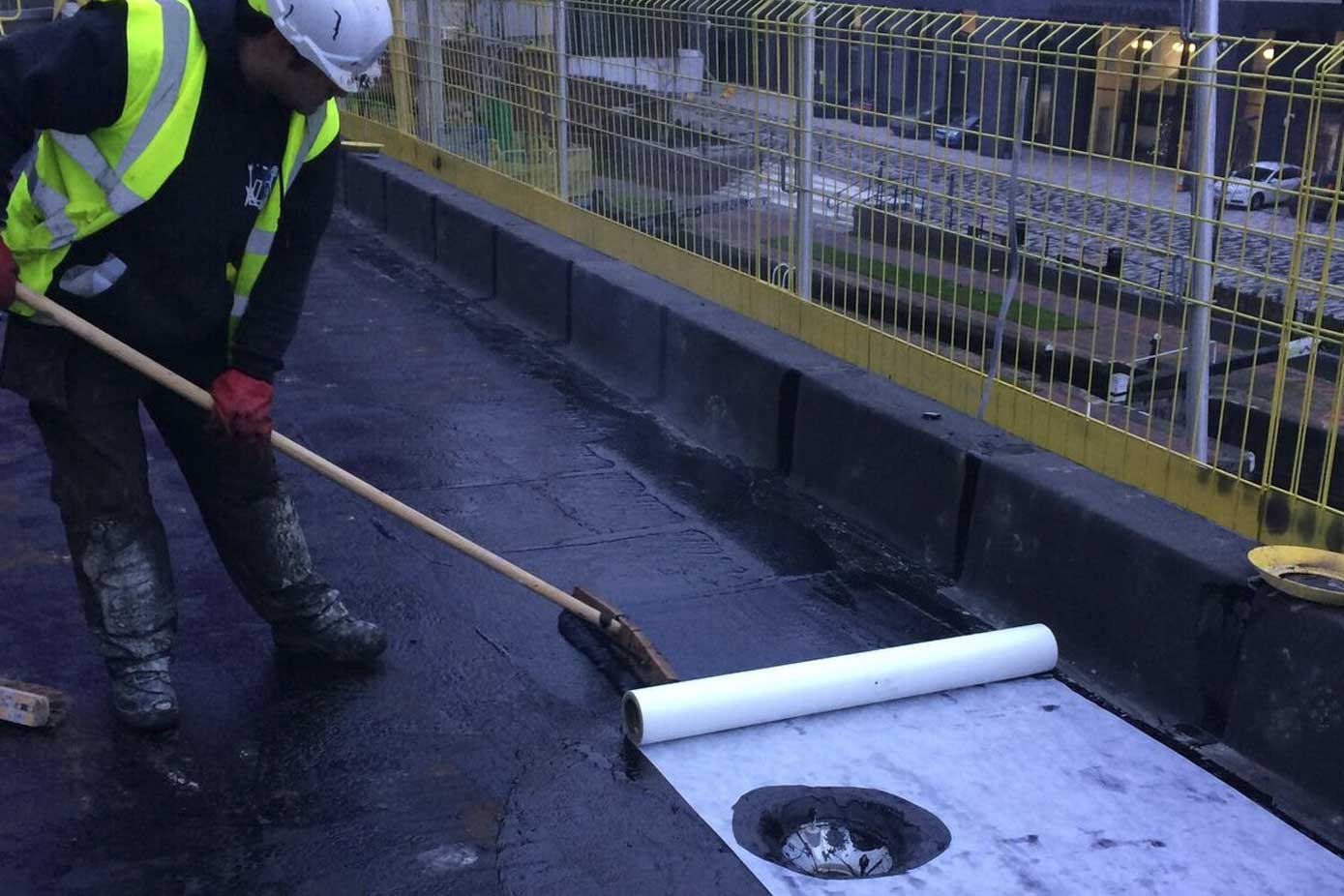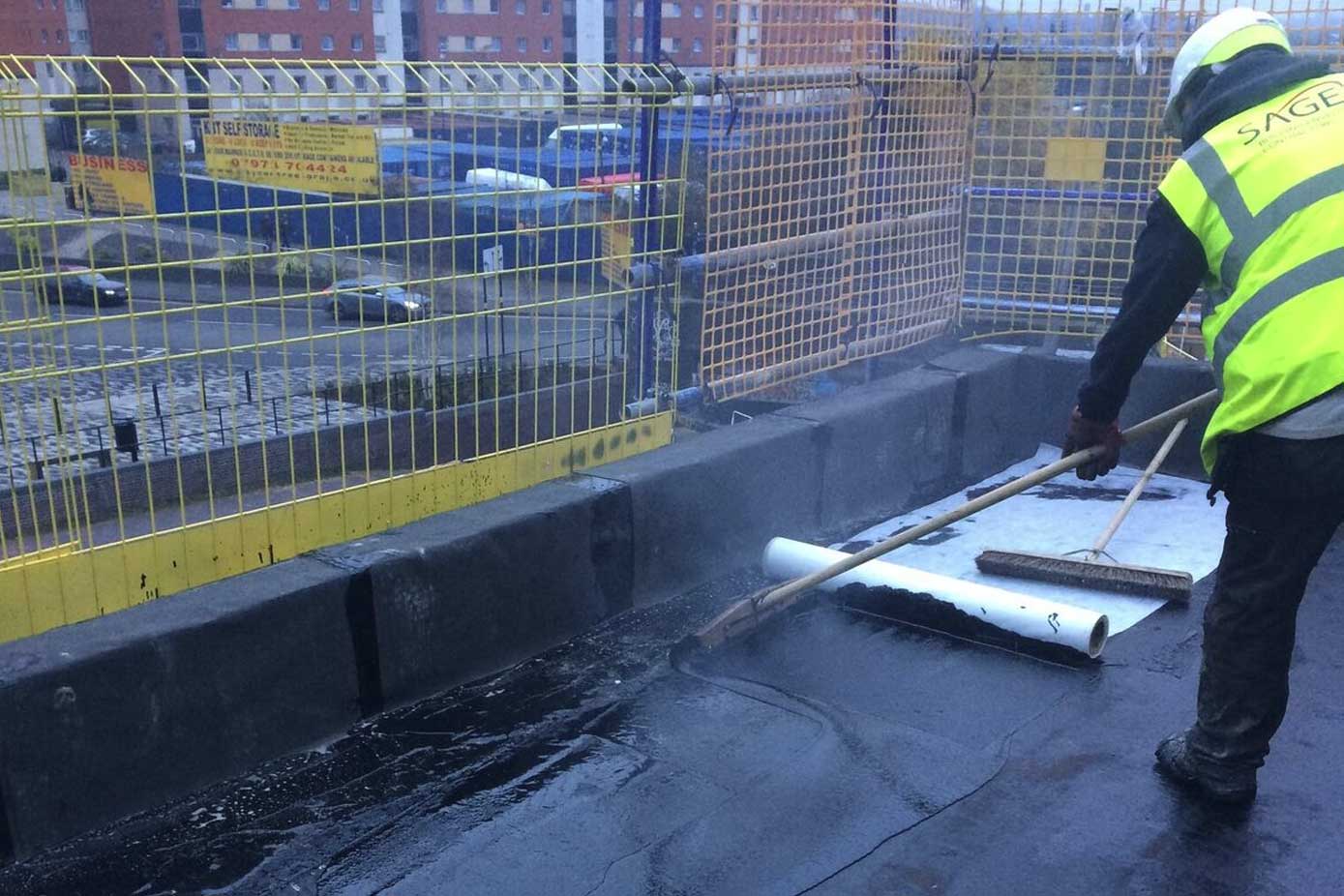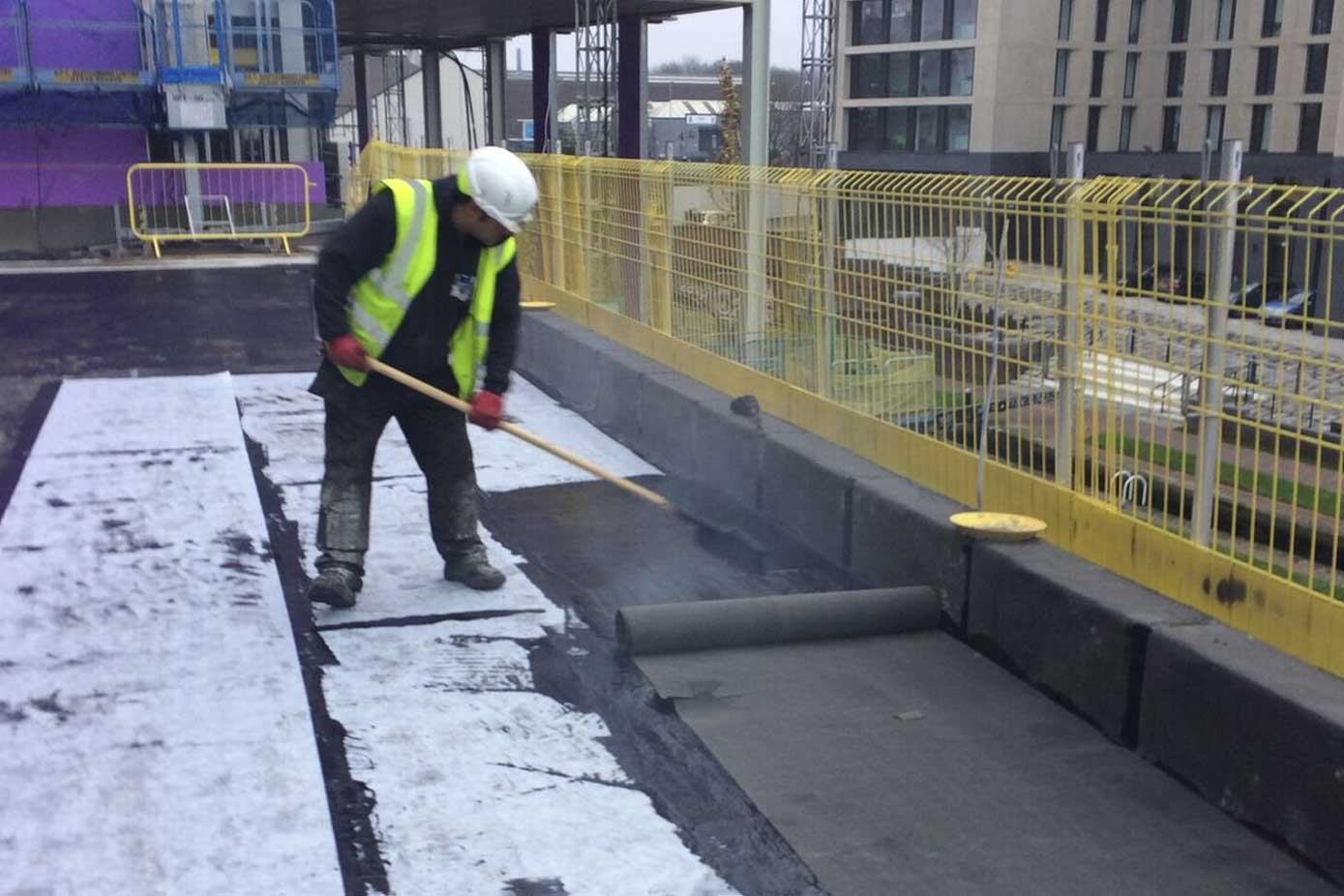HOT MELT ROOFING
Hot Melt provides a traditional look and is favoured for its excellent life expectancy and self healing membrane.
What is Hot Melt Roofing?
Hot Melt roofing systems provide a self-healing membrane created by applying a hot liquid directly to a prepared structural surface. It is a fully bonded monolithic system that can adjust to the shape of a building and create an effective waterproofing solution.
It has a two layer bituminous rubber system, approximately 6mm overall thickness, with reinforced fleece between the layers, and needs a fully bonded felt layer over this. It is suitable for bonding with concrete, timber, brickwork and other materials, easily covering surface irregularities.
We are approved installers of the leading Hot Melt roofing systems in the UK.
IKO Permatec is a waterproofing system manufactured in the UK. It is melted and applied as a liquid directly to the deck in two 3mm coats to form a fully waterproof membrane. IKO Hot Melt is produced for longevity so it will last the life of the building on which it is installed. The flexible design can be applied around beams and posts and can withstand rain and frost as soon as it is applied. This makes Permatec an effective roofing solution that can be installed throughout the year.
Alumasc Hydrotech offers long-term waterproofing and is favoured for its hardwearing performance. The Hydrotech MM6125 is made of 100% solids therefore it contains no solvents and does not require mixing. This lightweight waterproofing system is a self healing membrane that will only require minimal maintenance on routine roofing inspections. Like other Hot Melt waterproofing systems, Hydrotech can be laid at low temperatures suitable for winter installations.
The Bauder waterproofing system uses 25% post-consumer recycled rubber and is ideally suited for installation on protected roofs such as inverted, paved, green roofs and ballasted surfaces. This seamless application is applied in 3mm layers of hot melt with a quick drying polymer primer. Bauder has the highest fire rating of F.AA.
Hot Melt roofing products can only be applied by licensed contractors. Sage BEC are specialist commercial roofing contractors with expertise in a wide range of materials and applications.
What are the benefits of Hot Melt systems?
-
- Bonds fully to the structure avoiding any change of water tracking, self-sealing minor penetrations
- Monolithic system so there is no risk of lap failures
- BBA certified to be laid flat at zero falls, and can also be laid vertically
- Can be laid in temperatures down to -10°C, much lower than a lot of flat roofing products, so installation can be carried out in winter conditions when roof temperatures will be lower than ground level
- FM approved with a 50 year life expectancy
- 100% solids, no mixing or curing time, no solvents
- Robust system suitable for plant rooms, high traffic areas, green roofs, water features, MUGA etc
- Hot Melt is usually the vapour control layer. The air seal is usually better controlled inside the building
- Easily accommodates a slab walkway
Things to consider when used inverted on a concrete deck
- Alumasc Hydrotech can’t be laid onto screed as it won’t adhere, it must be concrete and wood float finish, power float is too smooth to adhere to. Alternatively, IKO Permatec can now be laid onto a skip float or power float finish, but not a power trowel finish
- Up stands must be laid BEFORE the field layer, make sure SFS and block work etc is in place. Outlets must be recessed and fitted before the field layer. You will probably need temporary drainage
- All electric boilers need 3 phase power. Standard boilers are 110V/32 Amp or for smaller areas 110V/16 Amp and these both require gas with attendant fire risk. Boilers must be located on the roof
- Penetrations are much better in before the field layer is applied, sealing to them afterwards is more expensive because of the cleaning process
- Systems must be peel tested for adhesion quality prior to installation. Concrete can be tested after 14 days, and it’s likely to be between 14-28 days before the hot melt can be laid. It can be torch dried after rainfall during installation
- For strength, the insulation in all ballasted systems must be XPS (expanded polystyrene) or a suitably modified EPS (extruded polystyrene)
- Minimum up stand is from the top of a finished roof level, such as the top of a slab or pebbles, and should be 150mm minimum. This applies to all roofing systems, so plan in door and window sills.
- Debris or dust or chemical contaminants will cause system failure. Adequately protect the concrete from these, including mortar splashes and access routes to working area. We include sweeping clean in our costs but will charge for any other clean.




